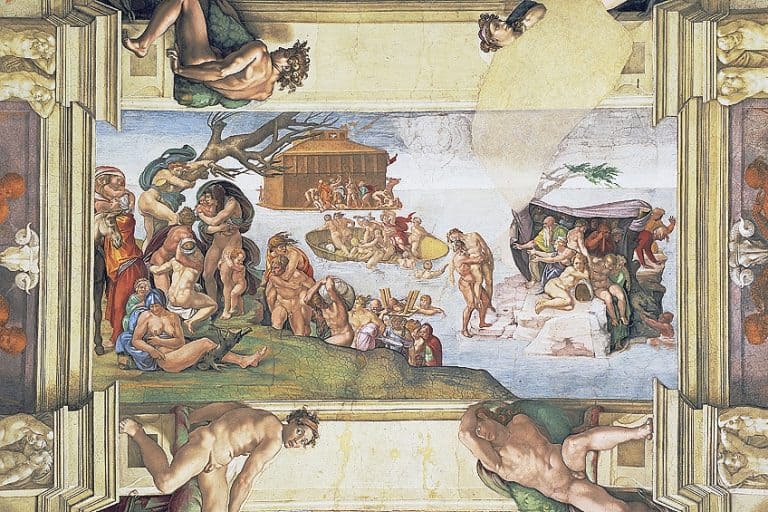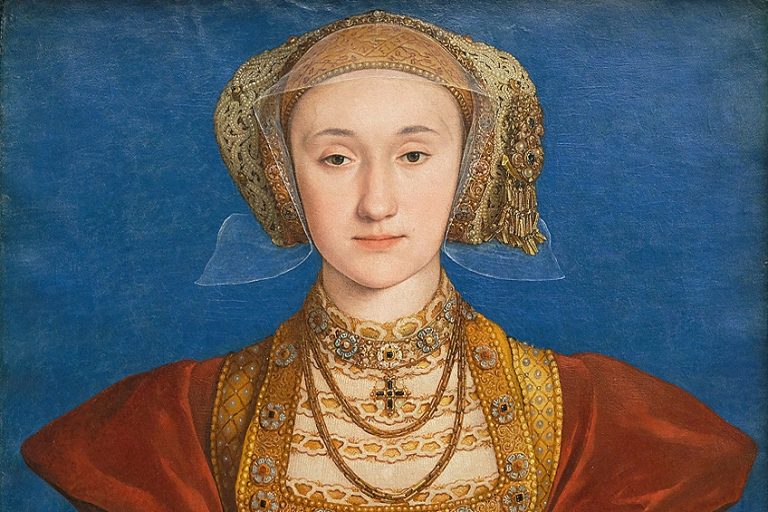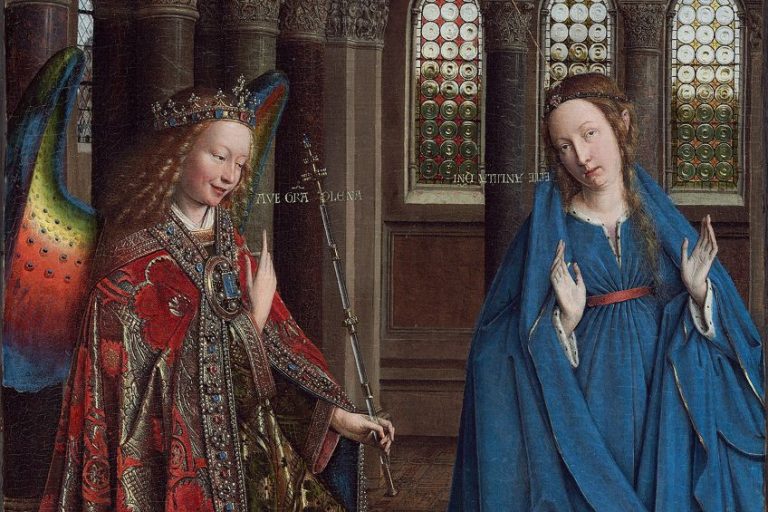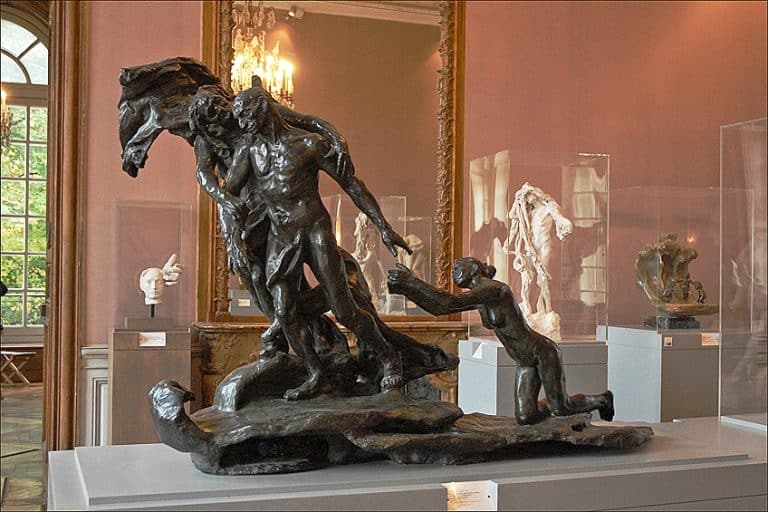“Self-Portrait” by Mary Cassatt – An Analysis in Pastels
Mary Cassatt, a pioneering figure in Impressionist art, is renowned for her evocative and intimate portrayals of domestic life, particularly her captivating self-portraits. One such remarkable piece is her Self-Portrait, a captivating work that encapsulates her mastery of color, light, and emotion. Painted in the late 19th century, this self-portrait not only showcases Cassatt’s technical prowess but also offers a glimpse into her personal world, reflecting her role as a woman artist navigating the complexities of her time. In this article, we delve into the intricacies of Cassatt’s Self-Portrait, exploring its significance within her oeuvre and its enduring impact on the art world.
Key Takeaways
- Cassatt’s self-portrait from around 1880 reflects her professional status and defiance of norms.
- The painting showcases her modern style with bold color and dynamic technique.
- Her life and experiences in Europe profoundly shaped her artistic journey.
The Life and Career of Mary Cassatt
Mary Cassatt was an important American painter known for her contributions to Impressionism. Born in Pittsburgh in 1844, she grew up in a wealthy family. Cassatt studied at the Pennsylvania Academy of the Fine Arts in Philadelphia from the age of 15. Cassatt moved to Europe in 1866 to expand her artistic horizons. She spent time in Italy, Spain, and other countries, studying old masters. Paris became her home, where she connected with the Impressionist group and met Edgar Degas, who greatly influenced her. Despite facing challenges as a female artist, Cassatt exhibited her work with the French Impressionists.

Her art often depicted scenes of modern women and children, focusing on their roles in society. She used a mix of techniques including oil, pastel, and watercolor. Throughout her career, Cassatt’s work reflected feminist ideas, highlighting the strength and independence of women. Her paintings were well-received both in Europe and the United States. Some of her famous artworks include The Child’s Bath, Little Girl in a Blue Armchair, and her self-portraits, which showcased her skill and vision.
Cassatt’s art remains celebrated for its contribution to modern art and the depiction of women’s lives.
Contextual Significance of Self-Portrait
| Artist | Mary Cassatt (1844 – 1926) |
|---|---|
| Date Created | c. 1880 |
| Medium | Gouache and watercolor over graphite on paper |
| Genre | Self-portrait |
| Period/Movement | Impressionism |
| Dimensions (cm) | 32.7 x 24.6 |
| Series/Versions | Single version |
| Where Is It Housed? | National Portrait Gallery, Washington, D.C., United States |
| What It Is Worth | Not publicly auctioned; significant cultural and historical value |
Mary Cassatt, an esteemed American artist, created the self-portrait around 1880. This watercolor and gouache painting captures Cassatt’s gaze returning to the viewer, establishing a direct and engaging connection. Her confident expression and fashionable attire reflect her professional status and her defiance of societal norms. Cassatt produced this self-portrait during a significant phase of her career when she began exhibiting with the French Impressionists.

Her bold use of color and technique demonstrates her modern artistic style, which emphasized mood and movement. The artwork not only showcases her skill but also highlights the evolving roles of women during that era. Notably, Cassatt’s background and travels influenced her perspective and technique profoundly. As the daughter of a wealthy Pennsylvania banker, she had the privilege to study and work extensively in Europe, which enriched her artistic expression. This self-portrait stands as a testament to her strength of character and passion for art.
Impact on Women in Art
Mary Cassatt was a trailblazer for women in the art world. At a time when women faced significant barriers, her achievements provided inspiration and validation. Her self-portrait highlights her determination and skill. Cassatt is remembered for depictions of women and children. Her works, like Mother and Child, showed tender, everyday moments.
Her self-portrait communicates her confidence and dedication.
It also challenges stereotypes by showing a woman artist in a professional light. Her presence and success helped pave the way for other female artists. Alongside contemporaries like Berthe Morisot and Marie Bracquemond, Cassatt proved that women could excel in a male-dominated field. The self-portrait thus represents a crucial step in advancing women’s roles in art.
Comparison With Contemporary Impressionists
Cassatt’s connections with other Impressionists, like Edgar Degas, influenced her style. Degas invited her to exhibit with the Impressionists, impacting her work significantly. The use of complementary colors and casual asymmetrical poses in her self-portrait are indicative of this. Unlike Degas, whose works often focused on ballerinas, Cassatt focused on intimate and domestic scenes. This portrait, compared with pieces like Woman Standing Holding a Fan, displays her unique approach to composition and color.

Cassatt’s self-portrait also demonstrates the Impressionist interest in capturing personal moments and expressions. Her work, housed in renowned institutions like the National Portrait Gallery and the Smithsonian Institution, continues to remind viewers of her unique position within the movement and her lasting influence.
Analyzing Self-Portrait (c. 1880)
Mary Cassatt’s Self-Portrait from 1800 serves as a testament to her skills and personal reflections. It showcases her attention to color, texture, and modern artistic techniques.
Subject Matter
Mary Cassatt’s Self-Portrait features the artist herself. She is depicted with a brown hat, a dark sweater, and a brown scarf. Her expression is one of deep thought, staring into the distance. This pose gives an impression of contemplation, highlighting the artist’s introspective nature.
The clothing suggests a period during the colder months, providing a contrast with the warmth of the paper’s hue.
Use of Color and Texture
Cassatt’s use of watercolor and gouache over graphite enhances the visual texture. The colors are carefully chosen, with browns and dark tones dominating the palette. The background is a sage green, providing a subtle yet effective contrast to the more vivid foreground. This adds depth and dimension to the painting, drawing the viewer’s eye to the details in her attire and expression.

Artistic Style and Technique
Mary Cassatt exhibited an Impressionistic approach, influenced by Edgar Degas. Her technique involved loose, quick brushstrokes, which helped in capturing the essence rather than the precise details. The use of gouache over graphite highlights her ability to blend various mediums.
The asymmetrical pose adds an element of modernity, deviating from traditional, static portraits.
Influence and Reflection of Personal Experience
Many believe this self-portrait reflects Cassatt’s internal feelings and the influence of her contemporaries. Her connection to Degas is evident in the painting’s style and methodology. The thoughtful gaze and relaxed pose suggest a sense of self-reflection, indicating that the artwork was more than just a portrayal but a window into her personal world during that era.
Cassatt’s Legacy and Exhibitions
Mary Cassatt’s Self-Portrait (c. 1880) is not only a testament to her skill but also an influential piece that still resonates today. This section explores the artwork’s current location and its lasting influence.
Location of the Artwork
Cassatt’s Self-Portrait is housed at the National Portrait Gallery, Smithsonian Institution in Washington, D.C. This piece, created using gouache and watercolor over graphite on paper, showcases her unique style and technique. This work is emblematic of Cassatt’s dedication to capturing the essence of femininity and individuality.
Its presence in the Smithsonian highlights the importance of Cassatt’s contributions to the art world and her place among other great artists in history.
Influence of Self-Portrait Today
Cassatt’s Self-Portrait continues to inspire artists and viewers alike. Its depiction of a female artist in a confident, thoughtful pose challenges traditional narratives of femininity. This work has also influenced many Canadian women artists, particularly members of the Beaver Hall Group. The Self-Portrait plays a crucial role in discussions about gender and the role of women in art. The piece is often studied in art history courses and is a significant example of the Impressionist Movement. Its design and use of complementary colors, inspired by Edgar Degas, further amplify its impact and relevance.

Mary Cassatt’s Self-Portrait stands as a testament to her artistic brilliance and pioneering spirit within the Impressionist movement. Through this captivating work, Cassatt not only showcases her technical mastery but also offers a profound insight into her identity as a woman artist in a male-dominated art world. The self-portrait’s enduring appeal lies in its ability to transcend time, inviting viewers to contemplate not just the artist’s visage but also the larger narrative of women’s contributions to art history. As we conclude our exploration of this remarkable artwork, we are reminded of Cassatt’s enduring legacy and her invaluable contributions to the realm of visual arts.
Frequently Asked Questions
What Are the Characteristics of Mary Cassatt’s Art Style?
Mary Cassatt is known for her use of bright, vibrant colors and loose brushwork. Her paintings often have a focus on light and shadow. She frequently depicted domestic life, especially mothers and children, in intimate settings.
How Has Mary Cassatt Contributed to the Field of Printmaking?
Cassatt made significant contributions to printmaking, especially in the use of drypoint and aquatint techniques. Her prints are notable for their detail and the use of soft, delicate colors. She often focused on women and children in her prints, just as in her paintings.
What Themes Predominantly Feature in Mary Cassatt’s Paintings?
Common themes in Cassatt’s work include motherhood, family, and the bond between mother and child. Her paintings often show everyday activities like bathing, reading, and playing. These themes highlight the private, domestic lives of women and children.
How Did Mary Cassatt’s Approach to Self-Portraiture Differ from Her Contemporaries?
Cassatt’s approach to self-portraiture was more reserved compared to her fellow artists. Rather than embellishing or dramatizing herself, she often depicted herself in a straightforward, honest manner. This authenticity offers a direct insight into her personality and artistic sensibilities.
Isabella studied at the University of Cape Town in South Africa and graduated with a Bachelor of Arts majoring in English Literature & Language and Psychology. Throughout her undergraduate years, she took Art History as an additional subject and absolutely loved it. Building on from her art history knowledge that began in high school, art has always been a particular area of fascination for her. From learning about artworks previously unknown to her, or sharpening her existing understanding of specific works, the ability to continue learning within this interesting sphere excites her greatly.
Her focal points of interest in art history encompass profiling specific artists and art movements, as it is these areas where she is able to really dig deep into the rich narrative of the art world. Additionally, she particularly enjoys exploring the different artistic styles of the 20th century, as well as the important impact that female artists have had on the development of art history.
Learn more about Isabella Meyer and the Art in Context Team.
Cite this Article
Isabella, Meyer, ““Self-Portrait” by Mary Cassatt – An Analysis in Pastels.” Art in Context. June 24, 2024. URL: https://artincontext.org/self-portrait-by-mary-cassatt/
Meyer, I. (2024, 24 June). “Self-Portrait” by Mary Cassatt – An Analysis in Pastels. Art in Context. https://artincontext.org/self-portrait-by-mary-cassatt/
Meyer, Isabella. ““Self-Portrait” by Mary Cassatt – An Analysis in Pastels.” Art in Context, June 24, 2024. https://artincontext.org/self-portrait-by-mary-cassatt/.











